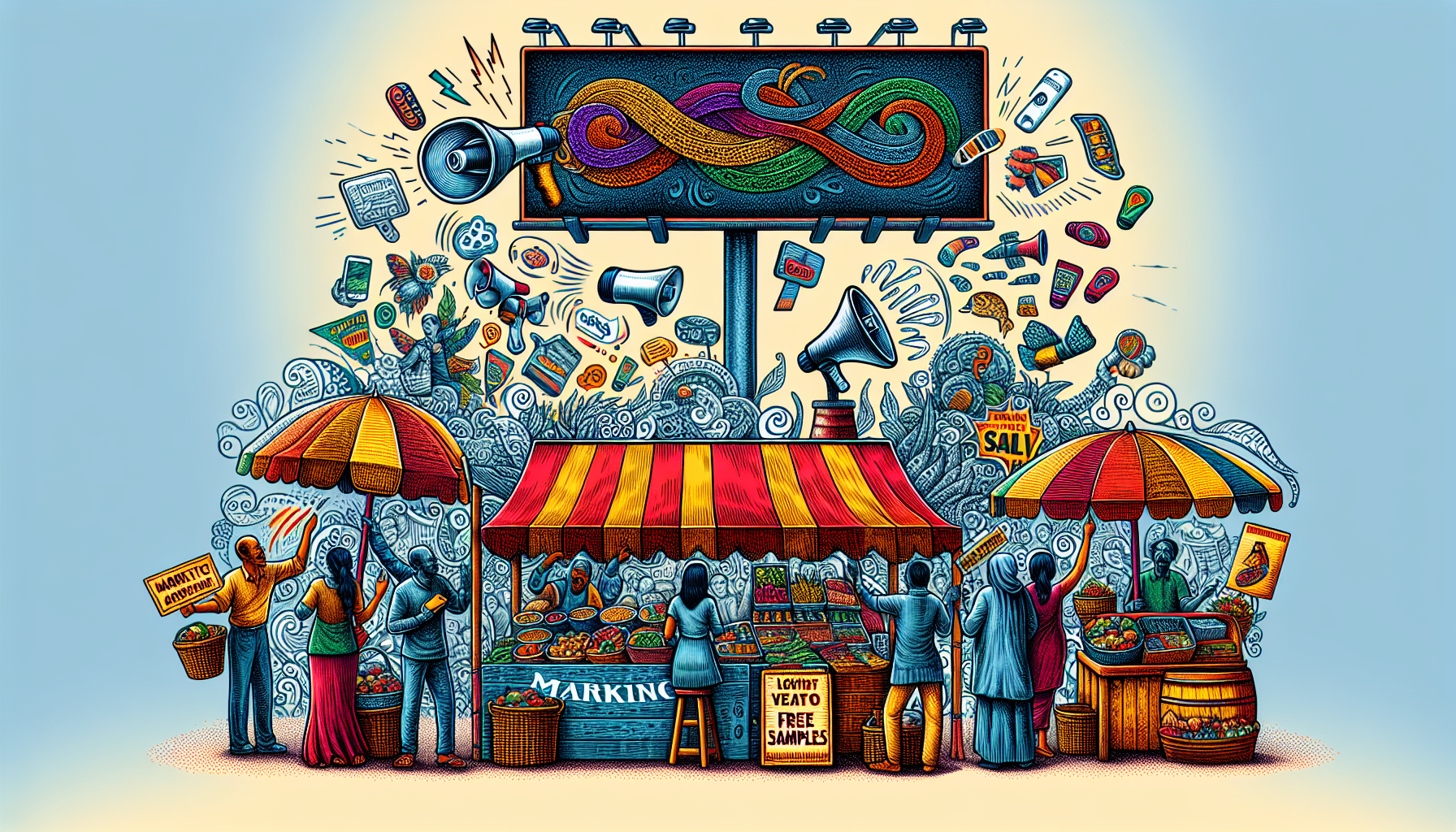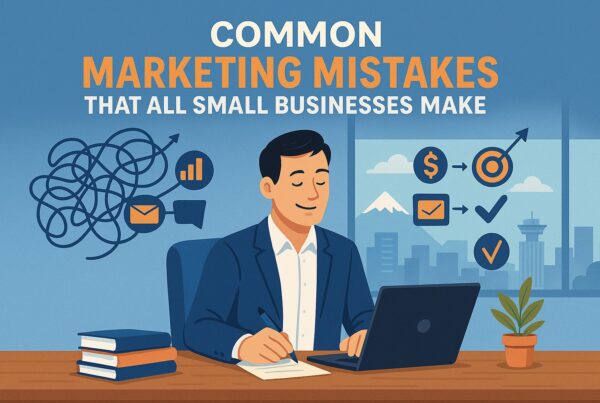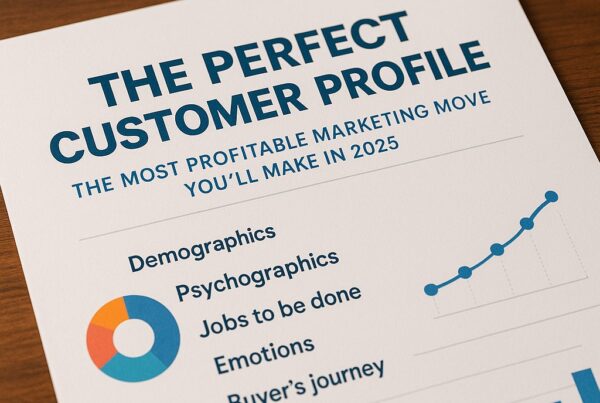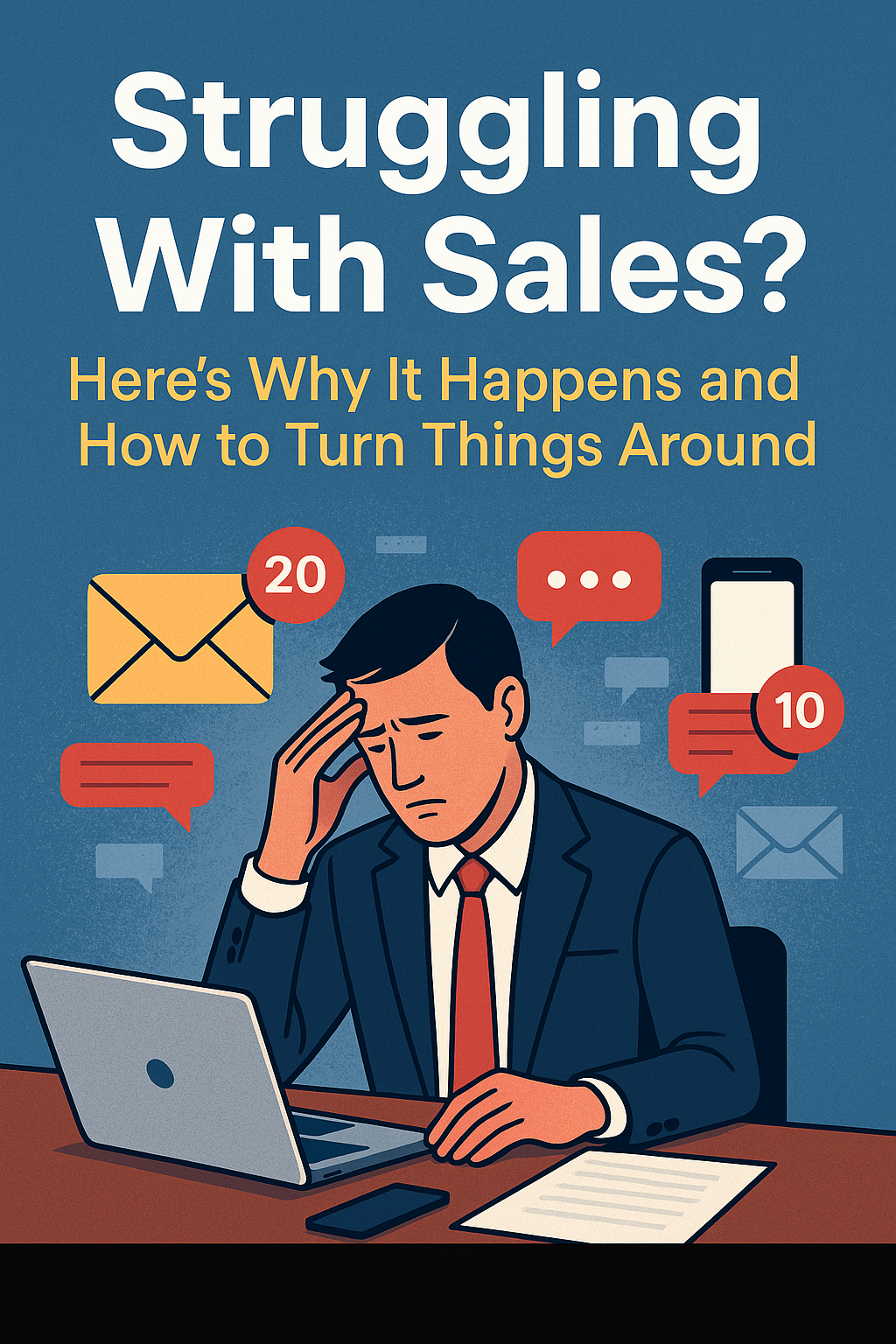Mastering the Sell: The Comprehensive Guide to Sales Success
Are you struggling to sell? Our direct approach to successful selling streamlines your sales process. Learn how to clinch deals with proven strategies and psychological insights. This guide gives you the practical know-how to boost your sales performance without the fluff.
Key Takeaways
- Selling transcends monetary transactions, encompassing the art of persuasion to accept ideas, beliefs, or nonmonetary exchanges such as barter, donations, or payment-in-kind arrangements, which can present ethical and legal challenges.
- The sales process is a systemic journey from lead nurturing to deal closure, involving key stages such as prospecting, presenting offers, and negotiating. Understanding psychology and building relationships are critical.
- Technological advances like AI, automation, and hyper-personalization are shaping the future of sales by streamlining tasks, providing insightful analytics, and enhancing customer engagement through personalized experiences.
The Art of Selling: Exchange for Money and Beyond

Selling, traditionally, is the exchange of a thing or service for money. It’s how businesses turn their products into profit and how markets thrive. However, selling is not confined to the realm of monetary transactions. It transcends the physical world to reach people’s minds and hearts. The broader definition of ‘sell’ includes persuading someone to accept ideas or beliefs, not just monetary transactions. This is where the art of selling comes into play, where words become tools and persuasion becomes key.
Nonmonetary transactions can occur when a business concludes without transferring money, such as through barter or service trade. In-kind exchanges and reciprocal nonmonetary transactions involve the exchange of assets or services of equal or negotiated value, bypassing the use of cash. However, not all nonmonetary transactions involve reciprocation. Nonreciprocal nonmonetary transactions are instances where one party provides value to another without repayment, such as donations.
Payment-in-kind (PIK) is a nonmonetary transaction in which repayment is made with goods, services, or securities instead of traditional currency. Due to the potentially ambiguous nature of the value exchanged, these transaction forms can raise complex ethical, moral, and legal questions.
The Basic Transaction: Goods, Services, and Money
At the heart of selling lies the basic transaction – exchanging goods or services for money. It’s a straightforward process, but each part plays a crucial role. The goods or services represent the seller’s value to the buyer. These could range from physical products to intangible services. The money, on the other hand, represents the value that the buyer provides to the seller. This simple exchange forms the backbone of all commercial activity, driving economies worldwide.
But this basic transaction is not an isolated event. It’s part of a larger ecosystem that includes:
- the seller’s sourcing of materials
- the production of goods or services
- the marketing efforts to attract potential buyers
- the buyer’s decision-making process
All these elements culminate in the basic transaction, the moment value is exchanged for thirty dollars on the stock exchange.
Persuasion and Gaining Acceptance
In the world of sales, persuasion is the name of the game. But persuasion extends beyond monetary transactions and into the realm of gaining acceptance. This is where selling becomes more than just an exchange of goods or services for money. It becomes a psychological endeavour, a process of influencing others to accept an idea, a belief, or a way of thinking.
In nonmonetary exchanges, such as political favours, there is often an implicit understanding that the party receiving a favour will reciprocate in the future, forming a quid pro quo scenario. But persuasion isn’t always a smooth process. Reactance is a psychological response where individuals resist persuasion when they sense their freedom of choice is limited, potentially undermining the effectiveness of the sales pitch. This highlights the importance of understanding the psychology of persuasion and the delicate balance that must be struck to gain acceptance successfully.
Are you ready to elevate your selling from transactional exchanges to transformative experiences?
Click here to book a 15-minute consultation and discover how to harness the art of persuasion to not just meet, but exceed your sales goals. Book Your Call Now!
The Sales Process: From Offer to Purchase

After understanding the art of selling, let’s dive into the sales process – the journey from the initial offer to the final purchase. It’s a foundational process that outlines the progression from nurturing a lead to closing a deal. The key stages that every sale must go through are:
- Prospecting
- Contact making
- Qualifying
- Nurturing
- Presenting offers
- Overcoming objections
- Deal closing
These stages are not just steps in a process but milestones in a relationship between the seller and the buyer, especially when a fort sold is involved.
Prospecting is the research-driven phase where potential clients are identified and initially qualified. The contact with a prospect should respect their preferred communication channels, whether through:
- phone
- social media
- others
Qualifying a prospect requires a deep understanding of their objectives and challenges and verification of their decision-making authority.
Presenting the offer involves tailoring the solution to the prospect’s specific needs and communicating the value proposition effectively. Addressing objections is integral to the sales process, where concerns are acknowledged and resolved. And finally, closing the sale should feel natural to the prospect and not forced, paving the way for a clear next step after the deal is secured.
Marketing and Promotion
In the realm of sales, marketing and promotion play a significant role. They’re the tools that create a desire to purchase, invoking feelings of reciprocity in consumers when free samples are given out, and adapting to various cultural influences and ethical considerations that affect buying decisions. Content marketing, including blogs, articles, and social media posts, combined with amplification strategies, is essential to educate, engage, empower, and entertain a wide audience, influencing their interest in a product or service. As the saying goes, publicity sells, and these strategies are the driving force behind it.
However, it’s not just about marketing and selling in isolation. Aligning sales and marketing – known as ‘smarketing’ – ensures that the efforts of both departments support each other, leading to consistent branding and more efficient workflows. Focusing sales efforts on potential customers who show interest, known as leads, by ‘fishing where the fish are’ can significantly increase the chances of conversion and sales success.
Pricing and Value

Pricing and value are two sides of the same coin in the sales world. To set the right product price, entrepreneurs should calculate direct costs, including raw materials and labour, as the minimum price to cover production. These direct costs and other expenses, such as general supplies and factory overhead, contribute to the final product being priced and ready for sale. A markup, defined as a percentage of the cost of goods sold, is determined to ensure a sufficient profit margin to cover indirect costs and achieve the desired profit.
But pricing is not just about covering costs and making a profit. It’s also about communicating value to the customer. When presenting an offer for sale, it’s crucial to connect the price of the product or service to the value it provides. Depending on their market position, businesses may choose to position themselves as an exclusive provider with higher prices and lower volume or aim for high-volume sales with lower prices. Customers’ perception of price in relation to value is significantly influenced by competitive pricing and promotions.
Negotiation and Closing
Negotiation and closing – these are the final stages of the sales process, where the deal either materializes or falls through. The goal during negotiations is a ‘win-win situation’, ensuring that both the seller and buyer benefit from the agreement. Sales professionals must overcome objections, negotiate prices, and prepare complete sales or purchase contracts. Payment methods should be determined prior to negotiations, considering options such as exclusivity deals, annual minimums, royalties, and upfront payments.
The closing stage of the sale should streamline agreement procedures for the prospect and clearly define the subsequent actions after the purchase. It’s the culmination of all the previous stages, where the relationship built with the buyer, the understanding of their needs, and the value offered all come together to close the deal. It’s the final step in the sales process, but it’s also the beginning of a new phase – the delivery of the product or service and the ongoing relationship with the customer.
Transform your sales journey from lead nurturing to deal closure with expert guidance.
Click here for a 15-minute strategy session to refine your sales process and achieve remarkable success. Optimize Your Sales Process!
The Language of Selling: Key Phrases and Terminology
Like any field, sales has its own language—a lexicon of key phrases, terminology, and expressions that encapsulate the essence of the trade. One critical sales term is the Unique Selling Proposition (USP), which highlights what makes a product or service different from and better than the competition. It is instrumental in convincing customers to choose one product over another. This language of selling is not just jargon; it’s a tool that salespeople use to communicate effectively and persuasively.
These phrases and terms are more than just buzzwords. They encapsulate complex ideas and strategies in a few words. Understanding them is crucial for anyone involved in sales, as they provide a common language for discussing and analyzing sales strategies. Whether it’s ‘hard sell’ or ‘soft sell’, ‘prospecting’ or ‘closing’, these terms provide a framework for understanding the sales process and its many components.
Sales Techniques: Hard Sell vs. Soft Sell
In the world of sales, techniques can be broadly classified into two categories: hard sell and soft sell. Content marketing is a soft-sell approach designed to attract an online audience by providing them with interesting and pertinent material to a company’s products or services. The primary objectives of content marketing include increasing awareness, building brand trust, and leading prospects into leads through demonstrations of organizational thought leadership. ‘Soft sell’ focuses on nurturing customer relationships and trust, leading prospects to solutions subtly, which is favoured in today’s consumer environment.
On the other hand, ‘hard sell’ represents a more forceful sales technique that involves directly addressing and overcoming a prospect’s objections, although many companies now consider it to be outdated. The choice between hard sell and soft sell is not a binary one; it depends on the product, the customer, the market, and the overall sales strategy. The most effective salespeople are skilled at both, able to adapt their approach depending on the situation and sometimes even navigating a ‘tough sell.’
Idioms and Expressions
The language of selling is not just about technical terms and jargon. It’s also filled with idioms and expressions that add colour and character to sales conversations. For instance, the idiom ‘sell like hotcakes’ refers to items that are sold quickly and in large numbers, indicating that the product is very popular. These expressions, including “hotcakes,” bring a touch of humanity and humour to the world of sales, making it more relatable and less mechanical. Some common sales idioms and phrases sell the idea of success in the industry, such as:
- “Close the deal”
- “Hit the target”
- “Pitch a product”
- “Seal the deal”
- “Make a sale”
- “Meet the quota”
Using these idioms can help you connect with your customers and make your sales conversations more engaging.
There’s also the expression ‘sell out’, used to describe someone who gives up their principles in exchange for money or popularity. In some cases, people might say “he’ll sell” out when referring to someone who is willing to compromise their values for personal gain. These idiomatic expressions provide a rich tapestry of language that reflects the complex and multifaceted nature of the sell verb. They capture the ups and downs, the challenges and triumphs, that are all part of the sales journey, including those who are willing to “sell one’s soul” in exchange for money or success. In the world of retail, even something as simple as these factors can influence shirt sales.
Professions in Sales: From Insurance to Real Estate

Sales is not just a skill; it’s a profession. There are countless jobs in the field of sales, each with its own unique challenges and rewards. Some examples include:
- Insurance sales agents who help individuals and businesses select insurance policies
- Real estate brokers who assist clients in buying, selling, and renting properties
- Pharmaceutical sales representatives who promote and sell prescription drugs to healthcare professionals
- Retail sales associates who interact with customers and help them find products they need
- Business development managers who identify new business opportunities and build relationships with potential clients
In various industries, the salesman sold his skills as a sales professional, playing a crucial role in their success.
In each of these professions, the basic principles of selling remain the same. But the specifics can vary greatly. Here are some examples:
- An insurance sales agent needs to develop trust with clients and understand various policy options.
- A real estate broker needs to be knowledgeable about local real estate markets and financing options.
- Car salespeople need to be well-versed in car specifications, financing options, and persuasive selling strategies.
Each of these professions requires a different set of skills, knowledge, and expertise, making the field of sales diverse and dynamic.
Insurance Sales
Insurance Sales Representatives specialize in:
- Offering insurance contracts to individuals or businesses, tailoring coverage to meet customer needs as they are the ones who sell insurance
- Gathering client information
- Generating business performance reports
- Adhering to company policies.
Insurance agents play a crucial role in the insurance process. They coordinate with:
- potential clients
- company agents
- underwriters
- claims adjusters
Their role is not just about selling; it’s about providing a service that protects individuals and businesses from financial loss. It’s a profession that requires a deep understanding of insurance products and regulations, as well as excellent communication and relationship-building skills.
Real Estate Sales
Real estate agents are licensed professionals authorized to assist in property transactions, and with additional education and experience, some agents progress to become licensed brokers. Their day-to-day responsibilities are multifaceted, including:
- Administrative office work
- Meeting with clients
- Staging homes for sale
- Overseeing property appraisals and inspections
Real estate sales is a profession that requires a broad set of skills, from understanding the local property market to navigating complex legal regulations. Agents specializing as seller’s agents focus on marketing properties, pricing, staging, vetting buyers, and negotiating sales, whereas buyer’s agents concentrate on finding suitable properties, guiding clients through the market, and managing offer submissions and the purchase process. Continuous education is mandatory for real estate agents to maintain their licenses, and many pursue further certifications and designations to elevate their skill set and enhance marketability in a competitive industry.
Car Sales and Beyond
Car sales associates have a variety of responsibilities, including:
- Building and maintaining customer relationships to foster repeat business
- Managing trade-ins effectively
- Providing management with sales information
- Completing reports
- Assisting with showroom setup and displays
Car salespeople typically work full-time during regular business hours, and their compensation packages often include a competitive salary, health insurance, and opportunities for professional development. It’s a profession that requires excellent communication and negotiation skills, as well as a thorough knowledge of car specifications and financing options.
But the world of sales extends beyond the used cars too. From retail sales associates to high-tech sales representatives, there’s a sales job for almost every interest and skill set.
The Psychology of Selling: Understanding Buyers and Their Needs
Sales is not just about presenting a product or service; it’s about understanding the buyer. This is where the psychology of selling comes into play. Sales psychology studies how a customer or prospect’s state of mind can impact their buying decisions, making it a foundational concept in understanding buyer behaviour. This psychological perspective focuses on the customer rather than the product, leveraging insights from social behaviours and brain function to guide customers toward purchasing. Some key concepts in sales psychology include:
- Building rapport and trust with the customer
- Understanding and addressing the customer’s needs and desires
- Using persuasive techniques to influence the customer’s decision-making process
- Overcoming objections and handling rejections
- Creating a sense of urgency and scarcity to drive action
By applying these principles of sales psychology, sales professionals can improve their effectiveness and increase their chances of closing deals.
But there’s more to sales psychology than just understanding the buyer’s mindset. It’s also about applying this understanding ethically. Ethical selling within the context of psychology is about applying cognitive biases and persuasive techniques with integrity to genuinely solve customer problems, rather than manipulative selling. Understanding and respecting the buyer’s psychological processes is not just ethical; it’s also more effective in building long-term relationships and achieving sustainable sales success.
Buyer Behaviour and Decision-Making
Buyer behaviour and decision-making are central to the sales process. Depending on the product and the buyer, purchase decisions can range from:
- Routine: for everyday products with little consideration due to well-established preferences
- Limited: involving more caution and research but still relatively quick, such as when upgrading a smartphone
- Extensive: for high-value purchases like electronics or cars, requiring more evaluation and often involving multiple decision-makers.
The stages in consumer purchase decisions include:
- Problem recognition
- Information search
- Comparison and evaluation
- Final decision
- Post-purchase evaluation
Each stage in this process allows sellers to influence the buyer’s decision. From creating a positive first impression, to nurturing the relationship, to overcoming objections, to offering multiple product options, every interaction with the buyer is a chance to move them closer to the purchase.
Identifying and Addressing Customer Needs
Identifying and addressing customer needs is at the heart of effective selling. Customer profiles, or ‘accounts,’ containing purchase history, interactions, and preferences, are critical for understanding customer behaviours and tailoring sales strategies.
To effectively identify customer needs, it is important to:
- Gather information about customer demographics, such as gender, age, marital status, and interests
- Analyze customer interactions and purchase history to identify patterns and preferences
- Use customer feedback and surveys to gather insights and understand their needs and expectations
By understanding customer needs and preferences, sales teams can create more personalized and effective sales pitches, leading to higher customer satisfaction and increased sales.
Understanding when customers are inclined to buy, their purchase preferences, and budget limits is essential for optimizing sales approaches and timing. Knowing customers’ satisfaction with current suppliers, the benefits they seek, and their perceptions of the seller and competitors can guide the enhancement of service and competitive positioning.
By knowing who the customers are, what they buy, and why, sales and marketing strategies can be more effectively tailored to meet their needs.
Unlock the secrets of your customers’ minds.
Schedule a 15-minute call with me to delve deeper into the psychology of selling and learn how to anticipate and fulfill your client’s needs more effectively. Unlock Your Sales Potential!
The Future of Selling: Technological Advances and Evolving Strategies
As we look to the future of selling, we see a landscape shaped by technological advances and evolving strategies. The rise of e-commerce, the proliferation of AI and automation, and the shift towards hyper-personalization – are the trends that are reshaping the world of sales. The future of selling is not just about new technologies; it’s also about how these technologies are used to enhance the sales process, from prospecting to closing.
In the future, we can expect to see:
- A more data-driven approach to sales, with AI-powered tools providing insights and recommendations that increase sales effectiveness and efficiency
- More automation of routine tasks, freeing up salespeople to focus on building client relationships and closing transactions
- A move towards hyper-personalization, with AI algorithms analyzing vast amounts of customer data to deliver highly personalized sales approaches.
E-commerce and Online Sales

One of the most significant developments in the world of sales is the rise of e-commerce. Here are some key statistics to highlight its impact:
- Global retail e-commerce sales surpassed $5 trillion in 2022 and are projected to exceed $7 trillion by 2025.
- E-commerce growth is expected to reach 22% of global retail sales by 2023, up from 14.1% in 2019.
- The rise of e-commerce marketplaces like Amazon has been significant in shaping the online retail landscape. In 2022, Amazon accounted for 39.5% of all US retail e-commerce sales.
These numbers demonstrate the immense growth and influence of e-commerce in the sales industry, especially when it comes to how effectively dresses sell online and the hot record sold in this category. In fact, this store sells more dresses than any other online platform.
E-commerce enables companies to:
- Reach new, global customers as an online store isn’t confined to a single geographic location
- Provide detailed product information on product pages, including descriptions, images, and videos, to drive consumer confidence and lead to higher conversion rates
- Offer robust customer journeys and personalization
- Enable artificial intelligence-enabled shopping
- Facilitate social shopping
- Support mobile commerce
- Utilize digital currencies like mobile wallets and cryptocurrency
The future of e-commerce includes these advancements and innovations.
Ready to dominate the e-commerce space with cutting-edge sales strategies?
Book your 15-minute call now, and let’s craft a winning strategy to skyrocket your online sales. Elevate Your Online Sales!
AI, Automation, and Personalization
Artificial Intelligence (AI), automation, and personalization are transforming the sales landscape. Here are some ways these technologies are making an impact:
- AI-powered prospecting tools analyze data to identify ideal customers, improving sales efficiency precisely.
- Automating routine sales tasks, like data entry and scheduling, enables salespeople to focus more on building client relationships and closing transactions.
- AI-driven analytics help in forecasting sales trends more accurately, enabling better strategic planning and resource allocation for sales teams.
The use of AI doesn’t stop at automation and analytics. Future advancements in AI are expected to produce sophisticated chatbots capable of managing complex interactions and potentially closing sales independently. AI algorithms can analyze vast amounts of customer data and sales history to identify patterns and predict customer behaviours, allowing for highly personalized sales approaches. AI is not just a concept but a vital component of effective sales strategies, offering unprecedented insights and personalization capabilities.
Intrigued by how AI, automation, and hyper-personalization can reshape your sales strategy for the better?
Let’s explore the future of sales together. Book a 15-minute call with me today and take the first step towards revolutionizing your sales process. Schedule Your Discovery Call!
Summary
In this journey through the world of sales, we’ve explored the art of selling, the sales process, the language of selling, the various professions in sales, the psychology of selling, and the future of selling. We’ve seen how selling goes beyond the simple exchange of goods or services for money, encompassing the art of persuasion, the science of psychology, and the technology of AI and e-commerce. Whether you’re a seasoned sales professional, a budding entrepreneur, or just an interested reader, understanding the world of sales can give you a new perspective on how products and services are sold and how you can become a more effective seller or a more discerning buyer. The world of sales is vast, dynamic, and constantly evolving, offering endless opportunities for learning and growth.
Frequently Asked Questions
What is the meaning of the word sell?
Selling means exchanging something for money, typically something you own or providing a service in return for payment. You give up your property or offer goods or services to another in exchange for money.
What is the sale used for?
Selling is used to give something in exchange for money or to encourage or persuade a person to purchase certain goods or services.
What is sell or sale?
Sell can be both a noun and a verb, whereas sale is always a noun. Sale refers to buying something at a lower price, whereas selling is mainly about getting something in exchange for money.
What is the basic transaction in sales?
The basic transaction in sales is the exchange of goods or services for money, forming the foundation of all sales processes.
What are the key stages in a typical sales cycle?
The key stages in a typical sales cycle are prospecting, contact-making, qualifying, nurturing, presenting offers, overcoming objections, and closing the deal. These stages are essential for successfully navigating the sales process.



